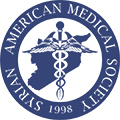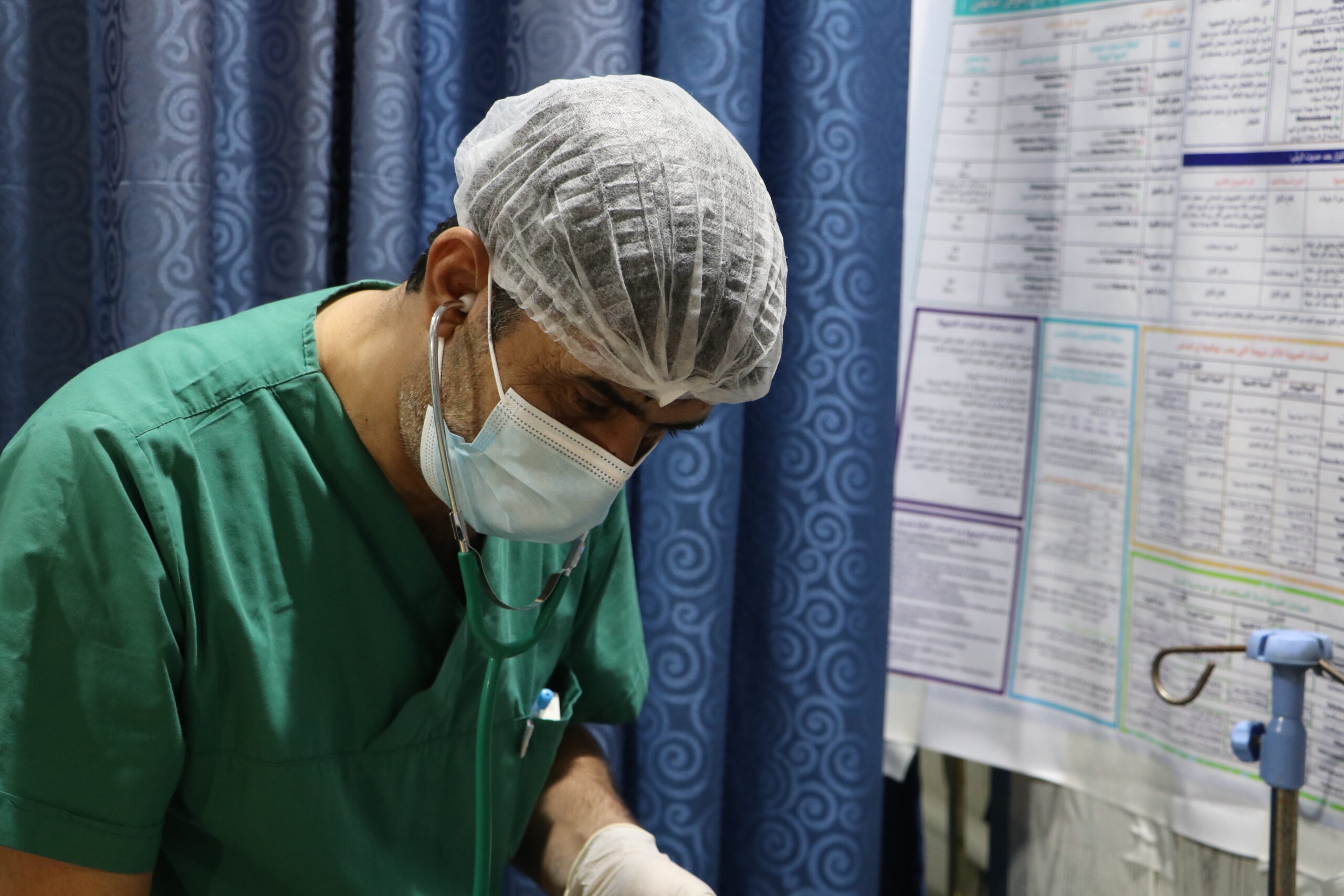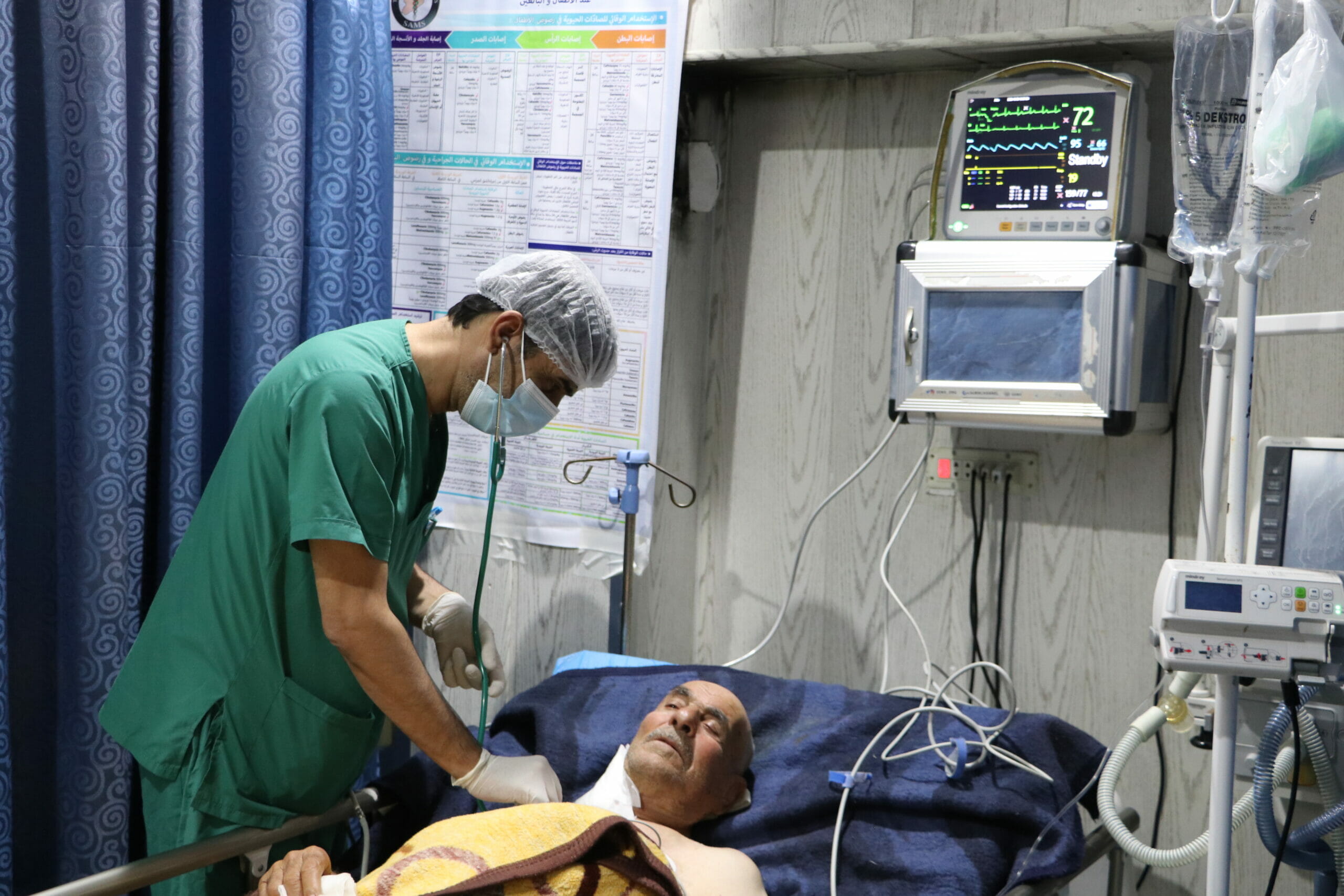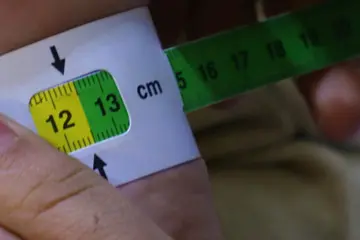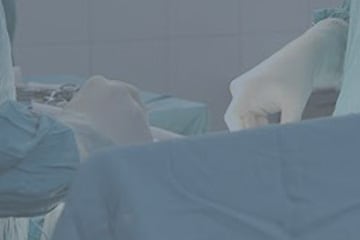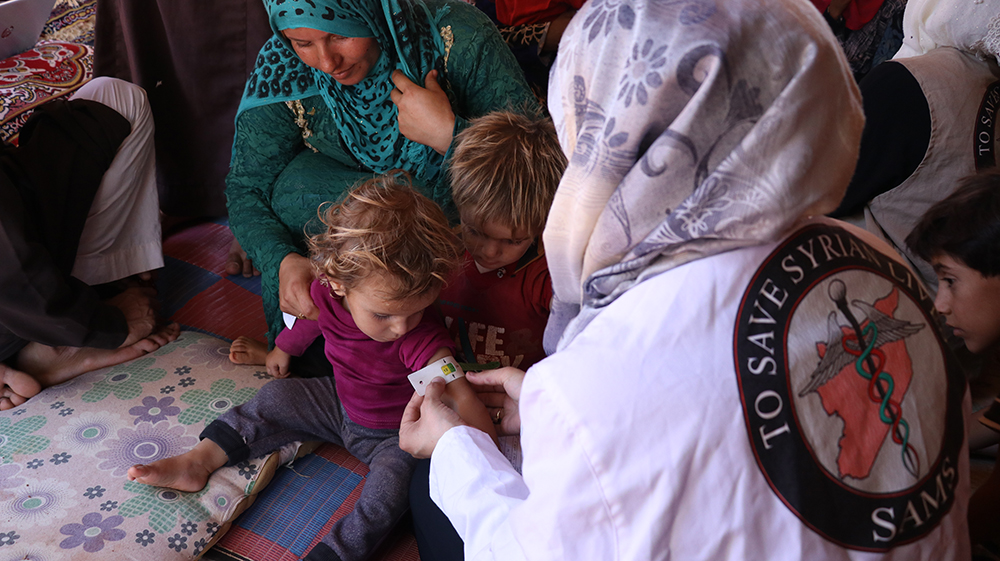October 9, 2020
Dr. Salah Al-Saleh is an anesthesiologist and ICU specialist in Idlib. He has been working with SAMS since 2015 when he first joined our team at Ma’arat Al-Numan Central Hospital. He remained there until the end of 2019, when the hospital was forced to close due to escalated bombardment. Dr. Al-Saleh is currently working at SAMS’ newly-established Al-Zara’a Hospital for COVID treatment and management. We recently caught up with Dr. Al-Saleh to discuss the current situation in northwest Syria amid displacement, strife, and COVID-19.
In light of the COVID-19 pandemic, can you describe a typical day working in the ICU?
At the newly-established SAMS-supported COVID-19 Center at Al-Zara’a Hospital in Idlib, we have been receiving an increased number of suspected and confirmed cases of COVID-19. For patients with hypoxia and severe respiratory infection due to the coronavirus, we provide oxygen therapy. We have 20 ICU beds, 18 of which are equipped with ventilators. Thanks to support from SAMS, we are expanding the capacity of the facility to 30 beds, and an additional 30-bed ward will open to receive suspected and mild cases of the coronavirus.
Every morning, we start our workday by taking the temperatures of all the staff as soon as they arrive at the hospital, at which point masks and gloves are provided to everyone to wear at all times. My own responsibilities begin when I enter the infection control room, where the infection control nurse prepares and equips us with the proper PPE before we can enter the ICU. These are heavy garments that can make it difficult for us to move around easily, as they are designed to be impermeable.
Once inside the ICU, we check in on patients and examine their vital signs (i.e., blood pressure, pulse, oxygen level, and temperature). We of course must also take into account their medical history and associated co-morbidities. Further analyses and chest x-rays may then be conducted as necessary depending on the condition of the patient. When we have patients on ventilators, we monitor their response to the extracorporeal membrane oxygenation (ECMO) and modify the breathing regimen accordingly. For intubated patients, we also base this decision on the color and quantity of sputum that is withdrawn from the inside of the endotracheal tube. We also administer blood oxygen level tests as needed and adjust the ventilator system accordingly.
Following our morning rounds in the ICU, the infection control nurses disinfect all of our protective gear. We then take them and change into our normal clothes and put on new masks, face shields, and gloves before heading to the on-call room.
Do you feel that the medical staff have adequate training and medical supplies to fight COVID-19?
SAMS has been conducting a series of intensive training courses on COVID-19 response. The first session was held prior to the opening of the COVID center. The course covers everything imaginable related to dealing with the coronavirus.
When was your first COVID patient? What was he/ she like?
The first positive case of COVID-19 we received at our facility was a patient suffering from malignant breast cancer that had spread throughout her entire abdomen. We had to perform needle aspirations on her chest numerous times in order to relieve the pressure on her lungs. After nine days, we were pleasantly surprised to discover that her COVID test came back negative, indicating that she had recovered from the virus despite her weak immune system. The patient was transferred to another hospital for follow-up cancer treatment.
Have you lost any patients to COVID?
Tragically, not all cases have been this successful. One of the cases I still mourn was the loss of a patient who had advanced symptoms. He developed respiratory failure rapidly and fell into shock. Despite placing him on a ventilator and putting him on cardiovascular life support, he passed away. There was nothing we could do to save him. This virus is dangerous for someone like this patient who had pre-existing conditions.
How has the local population in NW Syria been impacted by the pandemic? How are IDPs dealing with the threat of COVID?
We, the people of northwest Syria, have been bombed, killed, and pushed out of our communities, our homes, our neighborhoods, and our lands. We’ve been forced to gather into a highly restricted geographic area lacking all basic necessities. The coronavirus will continue to spread rapidly given the overcrowding and poor living conditions for the hundreds of thousands of internally displaced individuals. Sadly, many people here have become despondent due to their frustration at the indifference of the international community, who ignored their calls for protection from the crimes committed against them at the hands of the Syrian government and its allies. And now, we are faced with another challenge in the coronavirus. The sad reality is that the disease is spreading quickly and will continue to do so given the conditions we live in.
What efforts are being done to educate the local population on mitigation measures?
Out in the streets and in everyday life, only a small portion of the public is cognizant of the danger and wear masks. We are in constant communication with the Health Directorate and other local and international organizations to join forces in our attempt to educate the public about the virus. We conduct educational courses and awareness campaigns, but these aren’t enough to help mitigate the spread of the coronavirus and help protect these vulnerable people. A lot needs to be done, beyond just awareness-raising activities. The international community needs to step up to the plate. For example, at our COVID center, Al-Zara’a Hospital, we lack equipment such as a CT scanner, which is acutely needed for coronavirus treatment. We struggle from many ventilator failures, as do other hospitals. There is an acute need for international support if we are to survive this pandemic, on top of everything else we have already lived through.
